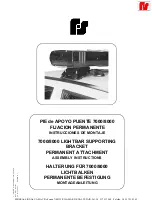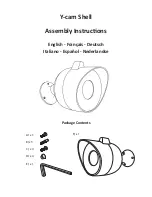
Nugg
Co de 39
Using Custom Applications
5-9
5
Using the Serial Port to Transfer Applications and Files
You can download or upload applications and files between a PC or host computer and
the terminal using serial communications. You connect the terminal’s serial port to the
host by using one of these accessories or options:
•
Communications dock
•
Optical link adapter
•
Serial interface module
•
(T2420 option only) Modem
For help connecting the terminal, see “Using Serial Communications on the Terminals” in
Chapter 4. Once the terminal is connected, you can transfer files to or from a terminal.
There are two ways to transfer files:
•
Use the FileCopy utility that ships with the TRAKKER Antares Programmer’s
Software Kit (PSK) and EZBuilder.
•
Use the Receive File or Transmit File reader commands. For help, see Chapter 8,
“Reader Command Reference.”
This section explains how to use the FileCopy utility to download or upload applications
and files to or from the terminal.
To run an application on the terminal, it must be stored as an executable binary file
(
*.BIN
). The FileCopy utility will automatically convert any
*.EXE
file to a binary file
(
*.BIN
) before downloading the file. With the FileCopy utility, you can download either
*.EXE
or
*.BIN
application files.
Note: If you have a T2425, you can download or upload files to or from the terminal
using either the serial port or RF communications through the DCS 300 or host.
To download or upload applications and files to or from the terminal
1. Connect the TRAKKER Antares terminal to your PC.
2. Start Microsoft Windows on your PC
3. From Program Manager, start FileCopy. The TRAKKER Antares FileCopy utility
screen appears.
FileCopy includes detailed online help. Click the Help button or press F1 anytime
to get more information.
Summary of Contents for Trakker Antares 2420
Page 1: ...TRAKKERAntares 2420and2425 Hand HeldTerminal P N 064024 006 User s Manual...
Page 15: ...nuggetf code39 Contents xv Glossary Index G I...
Page 16: ...xvi...
Page 24: ...xxiv...
Page 25: ...nuggetf code39 Getting Started 1...
Page 26: ...1 2...
Page 60: ...1 36...
Page 61: ...Learning How to Use the Terminal 2...
Page 62: ...2 2...
Page 103: ...Co de 39 Nugget Configuring the Terminal 3...
Page 104: ...Co de 39 Nugget 3 2...
Page 134: ...3 32...
Page 135: ...Operating the Terminal in a Network 4...
Page 136: ...4 2...
Page 173: ...Using Custom Applications 5...
Page 174: ...5 2...
Page 193: ...Troubleshooting 6...
Page 194: ...6 2...
Page 219: ...Running Diagnostics 7...
Page 220: ...7 2...
Page 243: ...Reader Command Reference 8...
Page 244: ...8 2...
Page 268: ...8 26...
Page 269: ...Configuration Command Reference 9...
Page 270: ...9 2...
Page 389: ...Terminal Specifications A...
Page 390: ...A 2...
Page 404: ...A 16...
Page 405: ...Full ASCII Charts B...
Page 406: ...B 2...
Page 415: ...International Character Support C...
Page 416: ...C 2...
Page 427: ...Using the Default Applications D...
Page 428: ...D 2...
Page 438: ...D 12...
Page 439: ...Glossary G...
Page 440: ...G 2...
Page 463: ...Index I...
Page 464: ...I 2...
Page 480: ...I 18...
















































